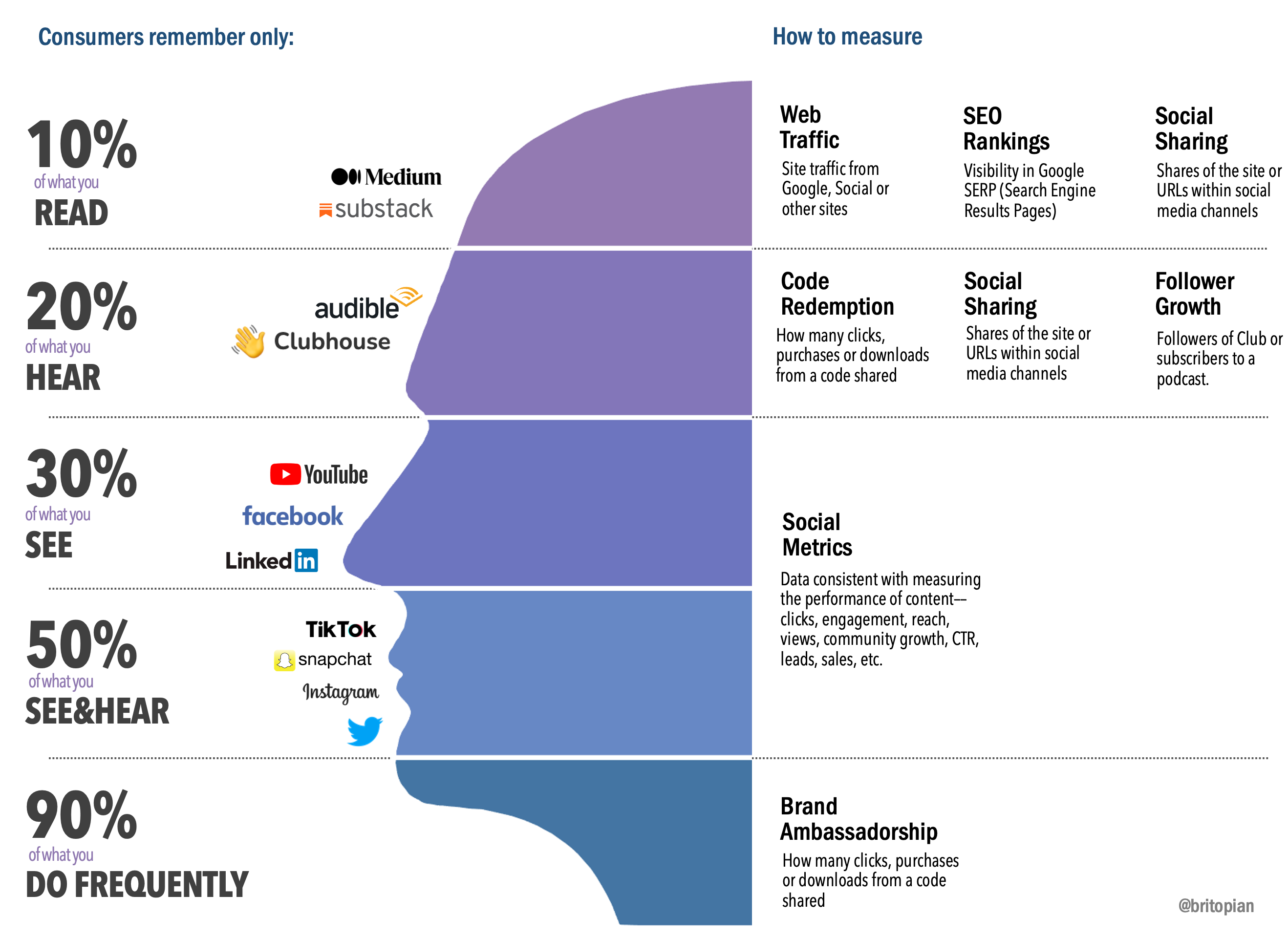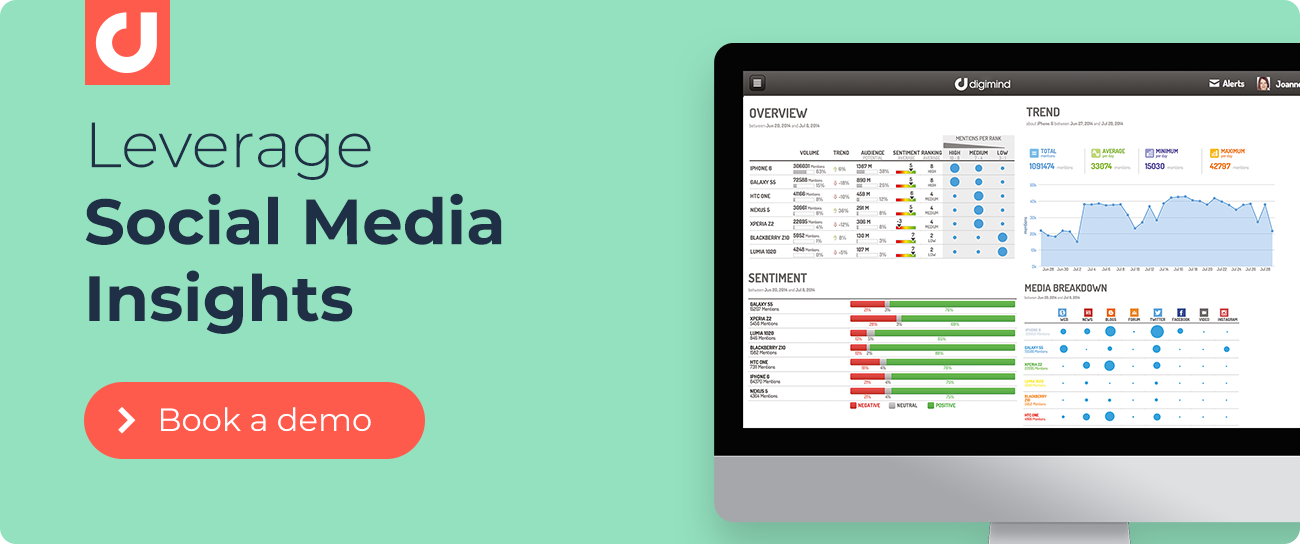5 Ways Brands Can Use Clubhouse and Other Social Audio Apps
According to a recent study by eMarketer, 2% of US adults are using Clubhouse. While the number itself might seem small, the fact that it's “invite-only” and available only on iPhones is impressive. Rumor has it that Clubhouse will open up to Android users sometime in May, which should catapult usage and adoption globally.
Clubhouse isn't the only Social audio app in town. Just last week, Twitter announced that everyone on the platform will have access to host their own Twitter Spaces sometime this month. Also, LinkedIn recently announced new features that will help its users become more influential on the platform and they will also be launching a new social audio experience.
Industry analyst, Jeremiah Owyang, who is also very influential on Clubhouse has documented 36 social audio apps that are either in beta or available in the market. As with most repetitive technology and social networking sites in general, it's safe to assume that there will be consolidation in the next one or two years. Despite which platform is left on top, social audio isn't going anywhere anytime soon.
I am not a big fan of launching new, branded social media channels. In fact, earlier in my career when I worked on the brand side, one of my projects was to consolidate 180 Facebook pages which took about 12 months to complete. It took me three months alone just to find out who the owners were of each Facebook page. It was a nightmare.
That said, assuming there is a well-documented plan which includes setting goals and objectives, an execution strategy, workflows for community management and crisis, a measurement framework and integration points, I am all for brands today figuring out different ways to engage this new audience. From a measurement perspective, documenting a higher-level, social audio analytics framework rather than focusing just on one channel like Clubhouse would be a smart thing to do.
But I want to point out that social audio is just one of many channels that brands can use to tell stories. Below is an adaptation of Edgar Dale’s, Cone of Learning. He was an educator and developed this model in the early 1900s while studying the way elementary students retain information within a learning environment.
There have been several studies by consultancies and research firms that suggest that consumers must interact with the brand three to five times before they take action. What this means is that brands must tell an integrated and repetitive story across all their channels.
I have adapted the Cone of Learning to include how social media channels align to the way we as consumers retain information. I have also included how it could be measured. Again, social audio is one very small piece to the larger brand ecosystem. So, while developing plans for Clubhouse, I would suggest a fully integrated program that would surround sound your audience with repetitive and consistent storytelling.

An adaption of Edgar Dale's Cone of Learning.
There are several ways that brands can leverage clubhouse and other social audio apps as a part of a larger integrated plan. Here are 5 to consider:
- Brand Sponsorships: Just today, Clubhouse announced payments for creators. The best way to describe this is Venmo-like functionality where users can send money to moderators or a particular speaker. According to the TechCrunch piece, Clubhouse will not make a dime from any transactions within the app, at least for now. What this means is that Clubhouse is building the functionality to send/receive money natively within the app. This will open the door to larger brand sponsorships in the near future. We are already starting to see many sponsored rooms happening today.
- Display Advertising: I am a moderate user of Clubhouse and to this day, I have not seen any display advertising within the app. However, it would make sense for them to do this at some point in the future. It's possible that Clubhouse users might have to watch an ad for 30 seconds before entering a room. I can also envision users required to sign up for a newsletter before getting on stage to speak. In any case, there will be many ways to capture leads and drive sales in the future.
- Thought Leadership: Many people equate the Clubhouse experience to attending a real-life event like SxSW or CES. And if you have ever attended an event like this, you'll know that most of the presenters and speakers are doing so from a place of experience. They are experts in their field and have come to share their knowledge with everyone in the room. Many of them are paid to be keynote speakers as well. There is really no difference from participating within Clubhouse rooms. For many B2B and technology brands, this is like a virtual press conference, with the only caveat that the content itself must add value to the larger conversation versus product or brand promotion.
- Employee Advocacy: Similar to executive thought leadership, brands who are operationalizing employee advocacy programs can use Clubhouse as a way to share knowledge and activate employees to be brand storytellers. Again, the message itself must add value and contribute to the goals of the room. By no means am I advocating that employees spam rooms with self-serving brand messaging.
- Social Customer Care: There's been a lot of discussion about leveraging Clubhouse for social customer care. I can't imagine a room being opened 24/7 allowing for customers to get in line and inquire about account-specific issues, especially when a room is open for everyone to listen. Perhaps it could be used as a triage to address customer concerns with follow-up in different back channels.
My advice for brands today is to spend more time listening than talking. This could mean deploying a small group of individuals to attend rooms in order to fully understand the culture of Clubhouse and how it works. There is also an opportunity to use social listening to better understand who the audience is, and which topics and clubs are driving the most engagement. Over the last few months, I have been very intrigued about social audio and have documented several Clubhouse insights with deep dives into the audience, how its changed and evolved over the last 12 months as well as the narrative drivers of room discussions.
The rise and popularity of social audio isn't going anywhere. Brands today have an opportunity to humanize themselves through this media but must do so in a way that's calculated and planned.
Cover image credits to Erin Kwon on Unsplash.
Written by Michael Brito
Michael Brito is a digital strategist, published author, TEDx speaker, adjunct professor, and avid 49ers and Lakers fan, with over 20+ years of experience helping organizations break through the clutter and reach their audience with game-changing marketing programs.
.png?width=100&name=logo%20(1).png)




